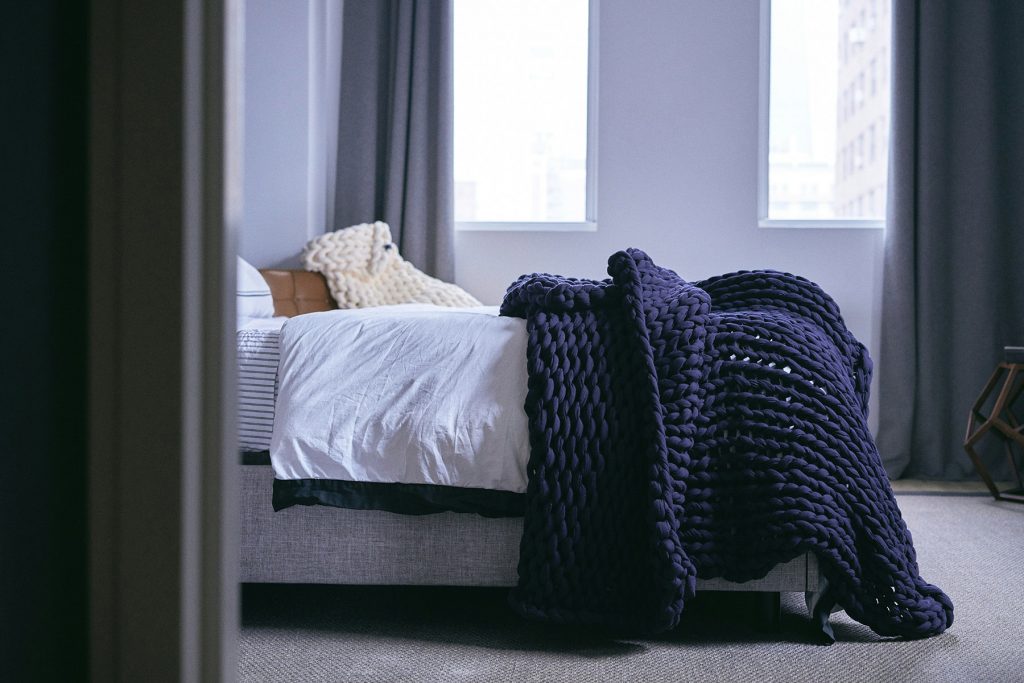When it comes to quality sleep, it’s not just your mattress or bedtime routine that matters—your bedroom temperature plays a critical role too. Studies show that the ideal bedroom temperature for deep sleep can significantly impact the quality of your sleep, helping you fall asleep faster and stay asleep longer. If you’re struggling to get a full night’s rest, adjusting your bedroom environment could be the simple solution you’ve been searching for.
Why Bedroom Temperature Affects Sleep
Our bodies follow a natural circadian rhythm, which includes a drop in core temperature at night. This decrease signals to the brain that it’s time to rest. A room that’s too hot or too cold can disrupt this process, leading to restlessness, night sweats, or waking up during the night.
Maintaining the ideal bedroom temperature supports the body’s natural sleep cycle, promoting deeper, more restorative sleep stages—particularly slow-wave and REM sleep. These are essential for memory consolidation, emotional regulation, and physical recovery.
What Is the Ideal Bedroom Temperature for Sleep?
The ideal bedroom temperature for deep sleep is between 16°C and 18°C (60°F to 65°F). This cool but comfortable range supports the natural dip in body temperature, creating the optimal environment for restful sleep.
Temperatures below 12°C or above 24°C can cause discomfort, leading to poor sleep quality and frequent awakenings.
Factors That Might Affect Your Optimal Sleep Temperature
Everyone’s comfort levels vary slightly, depending on:
-
Age: Older adults may prefer a slightly warmer room.
-
Gender: Hormonal fluctuations, especially in women, can influence thermal comfort.
-
Health conditions: Certain medical issues like hypothyroidism or menopause can affect how your body regulates temperature.
How to Maintain the Best Sleep Temperature
Here are a few practical tips to create the perfect sleep climate:
1. Use Breathable Bedding
Opt for natural, breathable fabrics like cotton, bamboo, or linen to regulate body heat and reduce sweating.
2. Invest in a Smart Thermostat
Smart thermostats allow you to programme your heating or cooling to automatically adjust at night, ensuring a consistent sleep environment.
3. Keep the Room Well-Ventilated
Open windows or use a fan to circulate air and prevent stuffiness. Good air quality also supports better sleep.
4. Layer Blankets
Instead of using a single thick duvet, layer your bedding. This allows you to easily adjust throughout the night if you feel too hot or cold.
5. Consider a Cooling Mattress or Pillow
Gel-infused memory foam or temperature-regulating pillows can help dissipate excess heat.
Signs Your Room Temperature May Be Disrupting Your Sleep
-
Waking up frequently during the night
-
Sweating or feeling clammy upon waking
-
Struggling to fall asleep despite being tired
-
Feeling groggy or unrefreshed in the morning
If you’re experiencing any of these, your sleep environment—especially the temperature—might need a closer look.
In Summary
Getting the right bedroom temperature is more than just a comfort preference—it’s essential for deep, uninterrupted sleep. Aim for a cool, controlled environment between 16°C and 18°C, optimise your bedding, and make small adjustments until you find what works best for your body.
Prioritising sleep isn’t a luxury—it’s a necessity. So tonight, turn down the thermostat and set the scene for the restorative sleep you deserve.
